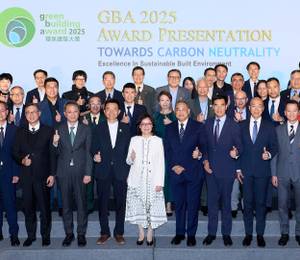Chicago, Illinois, USA – Global architecture firm Goettsch Partners (GP) celebrated the groundbreaking on 20 December 2019 for Union Station Tower, also known as BMO Tower, a new 50-storey office building in Chicago. GP is serving as the architect for the project, developed by Riverside Investment & Development and Convexity Properties and anchored by Montreal-based BMO Financial Group. The tower and new public space are part of the larger redevelopment of Chicago Union Station, along with additional adjacent real estate owned by Amtrak.
Located directly south of the 1925 Union Station headhouse building, the 2.2-acre full-block site is positioned in a rapidly changing area of the West Loop, with close connections to transit and the major expressways. The program consists of 1.5 million square feet of Class A office space and associated amenities, including two levels of underground parking. Most of the site – about 1.5 acres – is set aside as a public park, similar to GP’s 150 North Riverside project, completed in 2017, with its ample public park and plaza on the river.
“This project will activate a prime site that has been largely underutilised next to Chicago’s busiest commuter station,” said James Goettsch, FAIA, Chairman and Co-CEO at GP, as well as the design leader for the project. “The office tower and park will bring vibrant, complementary additions to the city,” added James.
Union Station Tower is designed as a stepped, three-tiered building approximately 700 feet tall. The building is oriented in the north-south direction along the east side of its site and features a subtly folded façade. The east face of the building aligns with the property line, reinforcing the urban street wall defined by the historic headhouse on the adjacent block. At street level, the new tower’s primary façades express V-shaped structural transfers, which open up the ground floor. In this way, the park becomes an integral and welcoming part of the building and its entry sequence, and the building serves as an extension of the park.










